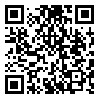BibTeX | RIS | EndNote | Medlars | ProCite | Reference Manager | RefWorks
Send citation to:
URL: http://refahj.uswr.ac.ir/article-1-2067-en.html
This article reviews the history of the opium and heroin market in Iran, presents recent figures on the economics of drug trafficking, summarizes factors that influence supply and demand, and quantitatively analyzes the market. It analyzes economic causes and motives of supply and demand, plus risk of seizure, and the socioeconomic characteristics of consumers and retailers. All These factors support conclusions about price trends, their causes and results, the function of the market and the individual motives of its people of the different socioeconomic groups, particularly the youth. In Iranian culture, the reciprocal emotional relationship between parents and children is still strong and long lasting. Consequently, the drug addiction of Iranian youth have caused families to press the government to control drugs and combat drug traffickers. For its part, the government is inclined to control drugs because the formal political Shiite ideology (according to interpretation of the majority of clergy) views the prevalence of drugs as a conspiracy of the enemy to weaken the Ommat (Muslim people of our country). Therefore, the huge annual human losses and economic damages of drug consumption and trafficking have caused the government to give priority to controlling the drug supply. In my opinion, the government is also obliged to sympathize with and take responsibility for drug control as a way of alleviating the negative attitude the governments of Western countries have toward human rights in Iran.
Received: 2015/09/7 | Accepted: 2015/09/7 | Published: 2015/09/7
| Rights and permissions | |
 |
This work is licensed under a Creative Commons Attribution-NonCommercial 4.0 International License. |





